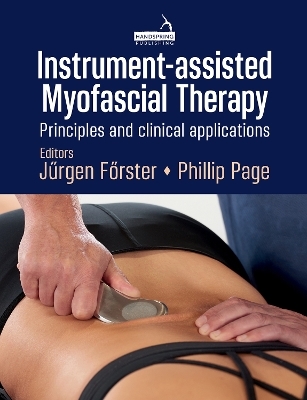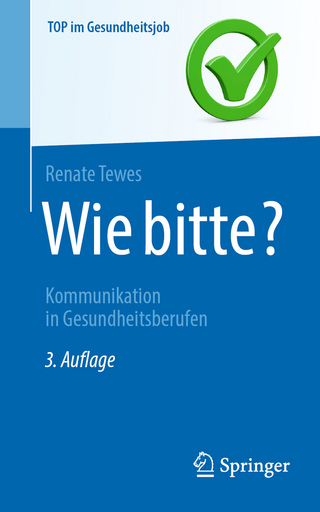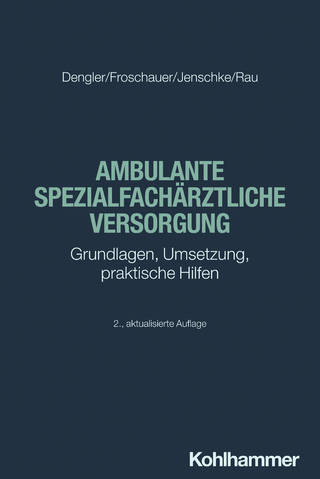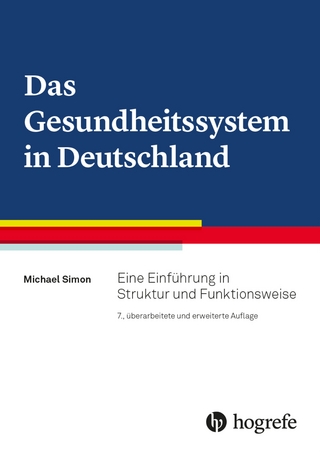
Instrument-Assisted Myofascial Therapy
Handspring Publishing Limited (Verlag)
978-1-913426-45-3 (ISBN)
The text progresses from didactic to practical information of relevance for a variety of clinicians:
Anatomy of the myofascial system and its role in pain/dysfunction and treatments
Science and theory of IAMT including history, types, and research on mechanisms of action and outcomes
Practical application of IAMT Practice: an overview of techniques specific to tissue type (scars, tendons, muscles)
Integration of IATM in clinical practice including clinical decision making (in diagnosis and treatment), indications, contraindications, and adjunct treatments
The text is intended to provide a guide for using myofascial instruments in daily practice. The reader will easily learn how to use IATM to enhance patient outcomes and to use it in a fashion which protects their own joints! Procedures are explained and demonstrated using a clear and practical approach. Full-color photographs illustrate the use of the therapy in these commonly-treated areas:
Cervical spine and head
Shoulder
Elbow, wrist and hand
Thoracic spine and chest
Lumbar spine and sacroiliac joint
Hip and pelvis
Knee
Ankle and foot
Treatment protocols are provided which can be easily applied by the therapist for use with a variety of diagnoses relating to the same structures by using a standardised and precise approach. A treatment protocol is first presented on a specific structure that is commonly treated. The specific instrument is to be used is described first, then the entire treatment is explained in detail. from the starting position of the therapist and patient. Treatment progressions are then listed, as well as possible treatment options within the “Myofascial Connective System (MCS). Beginning with the primarily treated structure, ’myofascial junctions’ are discussed; first regionally in a distal and proximal direction, and then within a functional myofascial chain. This unique approach greatly simplifies the various IATM procedures for the reader to easily implement in practice.
Readers will learn an integrated approach to IATM in a variety of clinical practice settings. Clinicians seeing post-operative patients will benefit from a chapter dedicated to the treatment of scars. Numerous case studies and the integration of other myofascial techniques (Cupping, Flossing/Mobility Bands, Kinesiology Taping and Fascial Fitness) complete the book.
Instrument-Assisted Myofascial Therapy – principles and clinical applications is the result of years of professional practice with IATM while evaluating patient outcomes. The concept is based on scientific evidence and has been developed in close collaboration with leading scientists and practitioners in the field of myofascial therapy. The text provides a pragmatic, evidence-informed approach to IATM practice.
Jürgen Förster is a physiotherapist from the German speaking community of Belgium. He first studied physiotherapy and education in Belgium (Brussels and Liège), then in Germany (Kaiserslautern and Witten-Herdecke) management of health and social care institutions. He has managed several physiotherapy schools in his career, including at the University Hospital RWTH Aachen. For a long time, Jürgen was a lecturer at Aachen University and University of Applied Sciences Aachen in the physiotherapy program. Jürgen received his doctorate in theoretical medical science. He has been an international speaker in the field of musculoskeletal therapy for many years; for more than 10 years he has been intensively involved in the development of the Myofascial Connected System and Instrument Assisted Myofascial Therapy (IamT). He is the author of several articles and of the first German-language book on this subject. Dr Phil Page is an assistant professor and research director at Franciscan University Physical Therapy program. He is a licensed physical therapist and certified athletic trainer. He has a Master’s degree in Exercise Physiology and a PhD in Kinesiology from LSU. Dr Page is a Fellow of the American College of Sports Medicine, as well as recipient of the Lifetime Excellence in Education award from the APTA Academy of Sports Physical Therapy. He has presented over 200 international lectures and workshops on exercise and rehabilitation topics and has written over 100 publications as well as 3 books. He has worked with the athletic programs at LSU, Tulane, the NFL New Orleans Saints and Seattle Seahawks, as well as the United States Olympic Track and Field Trials.
Intro: how to use this book
Part 1: Evidence-based Practice
Ch 1:The myofascial system: anatomy, role in pain/dysfunction/ treatments
Ch 2: IASTM: history, types, research on mechanisms of action; research on outcomes
Ch 3: Overview of Techniques, specific to tissue…scars, tendons, muscles, etc.
Ch 4: Integration in practice: clinical decision making (diagnosis/treatment), indications, contraindications, adjunct treatments
Part 2: Clinical Applications of IamT: Upper Quarter
Ch 5: Cervical/Head (neck pain, TMJ, headache)
Ch 6: Shoulder (impingement, frozen shoulder)
Ch 7: Elbow/Wrist/Hand (tennis elbow, carpal tunnel, Duyuytren, hand OA)
Part 3: Clinical Applications of IamT: Lower quarter
Ch 8: Thoracic (Ribs)
Ch 9: lumbar spine (LBP, SIJD)
Ch 10: Hip (Pubalgia, OA, groin pain)
Ch 11:Knee (Hamstrings, patella tendon, OA)
Ch 12: Ankle & Foot (achilles, plantar fasciitis)
Part 4: Clinical Applications of IamT: Scars
Ch 13: Superficial skin scars
Ch 14: Deep scars of the ligaments and capsules after distortions and operations
Part 5: Case studies (by other authors)
Ch 15: Shoulder
Ch 16: Elbow
Ch 17: Knee
Ch 18: Ankle
Ch 19: Cervical Spine
Ch 20: TMJ (Temporomandibular joint)
Ch 21: Lumbar spine
Part 6: Therapeutic integration (by other authors)
Ch 22: The contribution of cupping to IASTM
Ch 23: The contribution of Flossing (Mobility Bands) to IASTM
Ch 24: The contribution of Kinesiology-Taping to IASTM
Ch 25: The contribution of Fascial Fitness to IASTM
Ch 26: The contribution of IASTM in the treatment of high performance athletes
Part 7: Conclusion and Summary – Bringing it all together
| Erscheinungsdatum | 06.12.2022 |
|---|---|
| Zusatzinfo | Illustrations |
| Sprache | englisch |
| Maße | 188 x 244 mm |
| Gewicht | 916 g |
| Themenwelt | Medizin / Pharmazie ► Gesundheitswesen |
| Medizin / Pharmazie ► Physiotherapie / Ergotherapie | |
| ISBN-10 | 1-913426-45-9 / 1913426459 |
| ISBN-13 | 978-1-913426-45-3 / 9781913426453 |
| Zustand | Neuware |
| Informationen gemäß Produktsicherheitsverordnung (GPSR) | |
| Haben Sie eine Frage zum Produkt? |
aus dem Bereich


